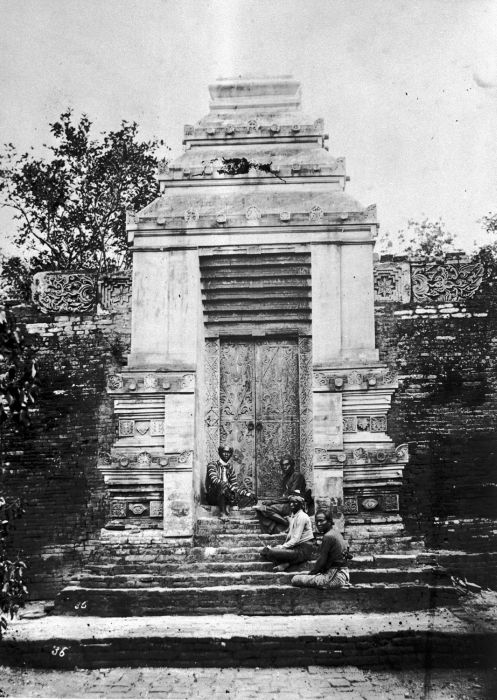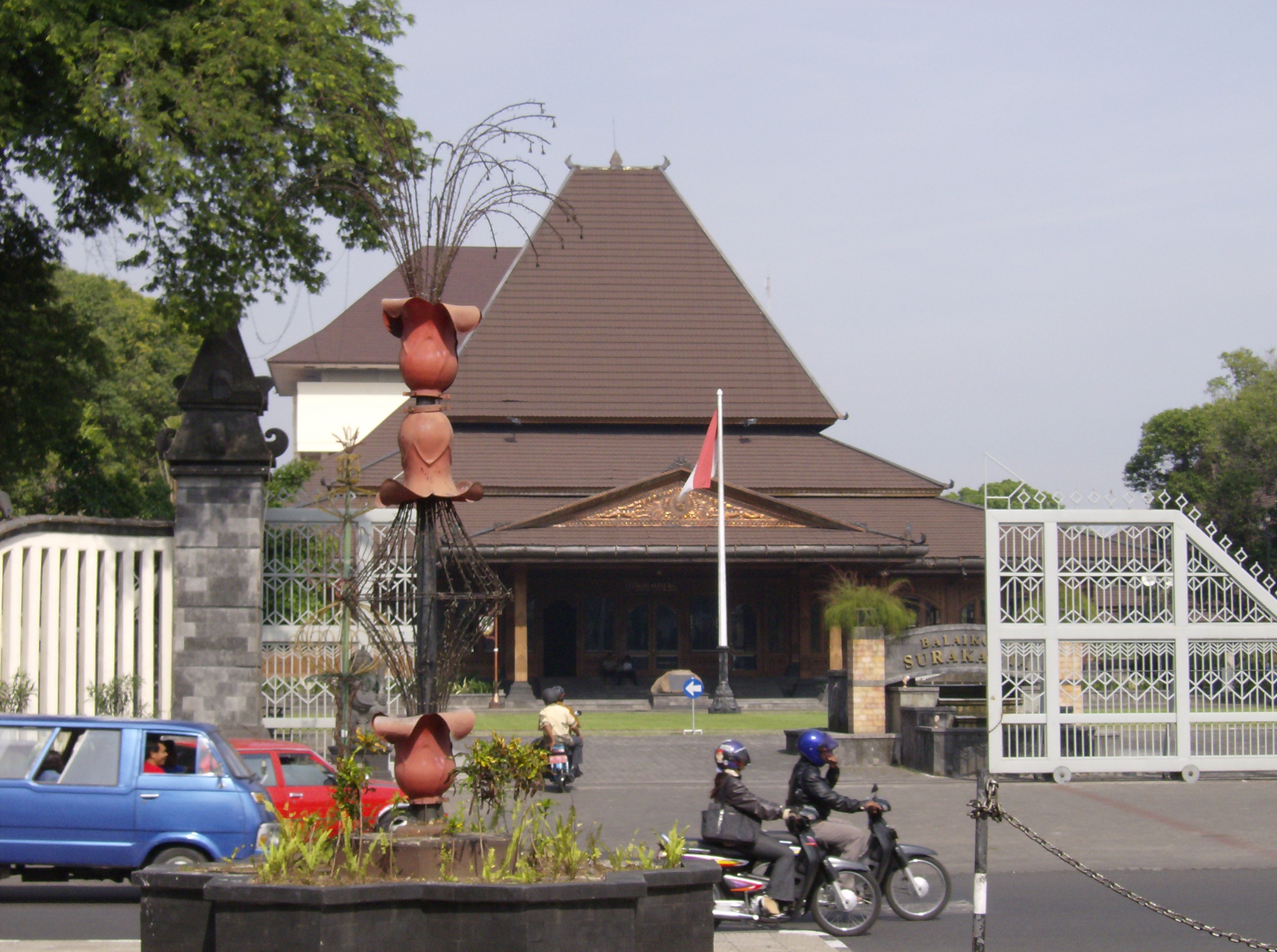|
Gedhe Pamanahan
Kyai Gedhe Pamanahan was the first ruler of the Sultanate of Mataram. He is also referred to as Kyai Gedhe Mataram. He was the descendant of Ki Ageng Sela (Sela is a village near present-day Demak). Pamanahan became the war advisor of the king of Pajang The Kingdom of Pajang or Sultanate of Pajang (كسلطانن ڤاجڠ ;1586–1568) was a short-lived Muslim state in Java. It was established by Hadiwijaya or Jaka Tingkir, Lord of Boyolali, after a civil war and was a successor to Sultanate ..., Sultan Hadiwijaya. After Hadiwijaya won a battle against Aria Panangsang with his advice, he gave Pamanahan the land to the south, near modern Surakarta, which became the Sultanate of Mataram, with the right of autonomous government. Sultans of Mataram Indonesian monarchs 16th-century monarchs in Asia 16th-century Indonesian people {{Indonesia-bio-stub ... [...More Info...] [...Related Items...] OR: [Wikipedia] [Google] [Baidu] |
Sultanate Of Mataram
The Sultanate of Mataram () was the last major independent Javanese kingdom on the island of Java before it was colonised by the Dutch. It was the dominant political force radiating from the interior of Central Java from the late 16th century until the beginning of the 18th century. Mataram reached its peak of power during the reign of Sultan Agung Anyokrokusumo (), and began to decline after his death in 1645. By the mid-18th century, Mataram lost both power and territory to the Dutch East India Company (Dutch: ''Vereenigde Oost-Indische Compagnie''; ''VOC''). It had become a vassal state of the company by 1749. Etymology The name ''Mataram'' itself was never the official name of any polity, as the Javanese often refer to their realm simply as ''Bhumi Jawa'' or ''Tanah Jawi'' ("Land of Java"). ''Mataram'' refers to the historical areas of plains south of Mount Merapi around present-day Muntilan, Sleman, Yogyakarta, and Prambanan. More precisely, it refers to the Kota ... [...More Info...] [...Related Items...] OR: [Wikipedia] [Google] [Baidu] |
Demak, Indonesia
Demak is a town in Central Java, Indonesia. It is the capital of Demak Regency and the location of the former Sultanate of Demak, briefly the strongest power on the island of Java. The town covers an area of 61.13 km2, and had a population of 110,165 at the 2020 Census.Badan Pusat Statistik, Jakarta, 2021. Climate Demak has a tropical monsoon climate An area of tropical monsoon climate (occasionally known as a sub-equatorial, tropical wet climate or a tropical monsoon and trade-wind littoral climate) is a tropical climate sub-type that corresponds to the Köppen climate classification category ... (Am) with moderate to little rainfall from May to October and heavy to very heavy rainfall from November to April. References * Demak Regency Districts of Central Java Populated places in Central Java Regency seats of Central Java {{CJava-geo-stub ... [...More Info...] [...Related Items...] OR: [Wikipedia] [Google] [Baidu] |
Pajang
The Kingdom of Pajang or Sultanate of Pajang (كسلطانن ڤاجڠ ;1586–1568) was a short-lived Muslim state in Java. It was established by Hadiwijaya or Jaka Tingkir, Lord of Boyolali, after a civil war and was a successor to Sultanate of Demak. Hadiwijaya claimed to be a descendant of Brawijaya V, the last king of the Majapahit empire, and Trenggana, the sultan of Demak. Pajang is based in Central Java as a continuation of the Demak Sultanate. The palace complex at this time only remains in the form of the boundaries of its foundations which are on the border of - Surakarta and , Kartasura, Sukoharjo. In the last battle against the last claimant of Demak, the vicious Arya Penangsang, Jaka Tingkir commissioned his greatest vassal, Ki Ageng Pamanahan, and his son, Sutawijaya, to destroy Arya Penangsang's army. The two managed to defeat and kill Arya Penangsang and were thus awarded a fief in a forest called Alas Mentaok, now Kotagede, on which they founded their bas ... [...More Info...] [...Related Items...] OR: [Wikipedia] [Google] [Baidu] |
Sultan Hadiwijaya
Joko Tingkir, or sometimes written as Jaka Tingkir, is the founder and the first king of the Sultanate of Pajang. He ruled from 1549 to 1582. He is also known by the title of Sultan Hadiwijaya. Ancestry Joko was the son of Ki Ageng Pengging, born as Mas Karèbèt. When he was conceived, his father was having a wayang beber (shadow puppet) show performed by the dalang Ki Ageng Tingkir. Both were followers of Syekh Siti Jenar (the 10th saint of Java). Afterwards, unfortunately, Ki Ageng Tingkir died of an illness. Ten years later, Ki Ageng Pengging was sentenced to capital punishment for rebellion against the Sultanate of Demak with Sunan Kudus as the executioner. After her husband's execution, Nyai Ageng Pengging also fell ill and died. Mas Karèbèt was then cared for by Nyai Ageng Tingkir, the widow of Ki Ageng Tingkir. When he grew up, he became widely known as Jaka Tingkir. He followed the teaching of Sunan Kalijaga Sunan Kalijaga (1460-1513), born as Raden Mas S ... [...More Info...] [...Related Items...] OR: [Wikipedia] [Google] [Baidu] |
Surakarta
Surakarta ( jv, ꦯꦸꦫꦏꦂꦠ), known colloquially as Solo ( jv, ꦱꦭ; ), is a city in Central Java, Indonesia. The 44 km2 (16.2 sq mi) city adjoins Karanganyar Regency and Boyolali Regency to the north, Karanganyar Regency and Sukoharjo Regency to the east and west, and Sukoharjo Regency to the south. On the eastern side of Solo lies Solo River (Bengawan Solo). Its built-up area, consisting of Surakarta City and 59 districts spread over seven regencies ("Greater Solo Area", formerly Special Region of Surakarta), was home to 3,649,254 inhabitants as of 2010 census, around half million of which reside in the city proper. Surakarta is the birthplace of the current President of Indonesia, Joko Widodo. He served as Mayor of Surakarta from 2005 to 2012. History Hominid habitation in the region of Surakarta is evidenced from roughly one million years ago, the age of the "Java Man" skeleton found 80 kilometers upstream. Another famous early hominid from this area is c ... [...More Info...] [...Related Items...] OR: [Wikipedia] [Google] [Baidu] |
Sultan Of Mataram
The Sultanate of Mataram () was the last major independent Javanese kingdom on the island of Java before it was colonised by the Dutch. It was the dominant political force radiating from the interior of Central Java from the late 16th century until the beginning of the 18th century. Mataram reached its peak of power during the reign of Sultan Agung Anyokrokusumo (), and began to decline after his death in 1645. By the mid-18th century, Mataram lost both power and territory to the Dutch East India Company (Dutch: ''Vereenigde Oost-Indische Compagnie''; ''VOC''). It had become a vassal state of the company by 1749. Etymology The name ''Mataram'' itself was never the official name of any polity, as the Javanese often refer to their realm simply as ''Bhumi Jawa'' or ''Tanah Jawi'' ("Land of Java"). ''Mataram'' refers to the historical areas of plains south of Mount Merapi around present-day Muntilan, Sleman, Yogyakarta, and Prambanan. More precisely, it refers to the Kota Gede ... [...More Info...] [...Related Items...] OR: [Wikipedia] [Google] [Baidu] |
Sutawijaya
Panembahan Senapati, formally styled Panembahan Senapati ing Ngalaga Sayyidin Panatagama (died in Jenar (now Purwodadi, Purworejo), 1601), was the founder of the Mataram Sultanate. Origin Born Danang Sutawijaya, known as Dananjaya, he was the son of Ki Ageng Pamanahan, a Javanese chief and retainer to Joko Tingkir, who reigned as Hadiwijaya, Sultan of Pajang. It was said that Pamanahan was a descendant of the last Majapahit king. Sutawijaya's mother was Nyai Sabinah who, according to Javanese chronicles, was a descendant of Sunan Giri, a member of Walisanga. Nyai Sabinah had a brother, Ki Juru Martani, who was elected as the first ''patih'' (viceregent) of Mataram. He had an important role in arranging strategy to suppress Arya Penangsang's rebellion in 1549. Sutawijaya was adopted by Hadiwijaya as an inducement, because Hadiwijaya and his wife still had no children yet in that time. Hadiwijaya gave him a residence in the north of a market, thus his nickname "Raden Ngabehi Lor ... [...More Info...] [...Related Items...] OR: [Wikipedia] [Google] [Baidu] |
Sultans Of Mataram
Sultan (; ar, سلطان ', ) is a position with several historical meanings. Originally, it was an Arabic abstract noun meaning "strength", "authority", "rulership", derived from the verbal noun ', meaning "authority" or "power". Later, it came to be used as the title of certain rulers who claimed almost full sovereignty (i.e., not having dependence on any higher ruler) without claiming the overall caliphate, or to refer to a powerful governor of a province within the caliphate. The adjectival form of the word is "sultanic", and the state and territories ruled by a sultan, as well as his office, are referred to as a sultanate ( '. The term is distinct from king ( '), despite both referring to a sovereign ruler. The use of "sultan" is restricted to Muslim countries, where the title carries religious significance, contrasting the more secular ''king'', which is used in both Muslim and non-Muslim countries. Brunei and Oman are the only independent countries which retain the ti ... [...More Info...] [...Related Items...] OR: [Wikipedia] [Google] [Baidu] |
Indonesian Monarchs
Indonesian is anything of, from, or related to Indonesia, an archipelagic country in Southeast Asia. It may refer to: * Indonesians, citizens of Indonesia ** Native Indonesians, diverse groups of local inhabitants of the archipelago ** Indonesian women, overview of women's history and contemporary situations * Indonesian language (Indonesian: ''Bahasa Indonesia''), the official language of Indonesia ** Indonesian languages, overview of some of the 700 languages spoken in Indonesia ** Indonesian names, customs reflecting the multicultural and polyglot nature of Indonesia * Indonesian culture, a complex of indigenous customs and foreign influences ** Indonesian art, various artistic expressions and artworks in the archipelago ** Indonesian cinema, a struggling and developing industry ** Indonesian literature, literature from Indonesia and Southeast Asia with shared language roots ** Indonesian music, hundreds of forms of traditional and contemporary music ** Indonesian philo ... [...More Info...] [...Related Items...] OR: [Wikipedia] [Google] [Baidu] |
16th-century Monarchs In Asia
The 16th century begins with the Julian year 1501 ( MDI) and ends with either the Julian or the Gregorian year 1600 ( MDC) (depending on the reckoning used; the Gregorian calendar introduced a lapse of 10 days in October 1582). The 16th century is regarded by historians as the century which saw the rise of Western civilization and the Islamic gunpowder empires. The Renaissance in Italy and Europe saw the emergence of important artists, authors and scientists, and led to the foundation of important subjects which include accounting and political science. Copernicus proposed the heliocentric universe, which was met with strong resistance, and Tycho Brahe refuted the theory of celestial spheres through observational measurement of the 1572 appearance of a Milky Way supernova. These events directly challenged the long-held notion of an immutable universe supported by Ptolemy and Aristotle, and led to major revolutions in astronomy and science. Galileo Galilei became a cham ... [...More Info...] [...Related Items...] OR: [Wikipedia] [Google] [Baidu] |




